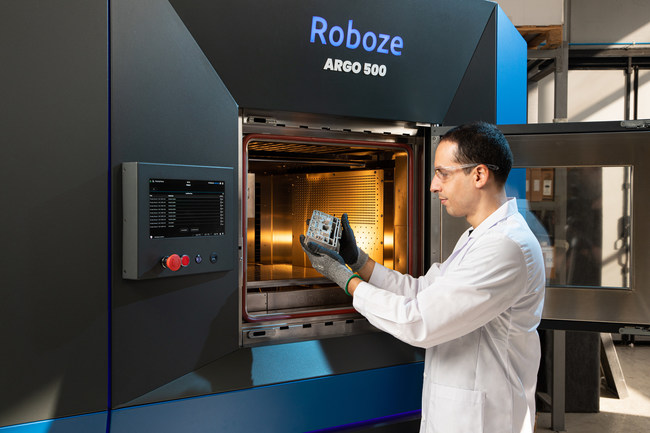Starting in January 2022, Roboze, the Italian-American manufacturer of 3D printers, polymers for additive manufacturing, and composite parts, is starting a circular economy program for its customers. The program will allow users of Roboze products to recycle waste material created in the 3D printing process, as well as parts that have reached the end of their life cycle, by returning the material directly to the company. Participants in the program will also be able to purchase recycled materials at a lower cost.
In a press release, the founder and CEO of Roboze, Alessio Lorusso, said, “We are working to refine the management of the entire supply chain, at any cost and with all the necessary efforts. 3D printing technology can be one of the solutions to combat CO2 emissions, reducing transport and producing just in time and on-demand. But if we don’t take serious actions and continue to generate plastic waste, then we will only become part of the problem….Our circular economy model will create zero waste and will represent and deliver the solution.”
Just as it displayed with a subscription plan rollout at the beginning of this year and distributed manufacturing service that it began about a year ago, Roboze is constantly making cutting-edge moves related to decentralizing the supply chain. This has always been an important issue environmentally, but more recently, it has become perhaps the paramount economic issue obsessed over in political discourse. Roboze is ahead of the curve in a way that will not only benefit the company itself, but could also very well set the tone for the industry as a whole.

With Roboze’s planned circular economy program, participants will not just be customers, they’ll be part of a more sustainable, less costly alternate supply chain. (Image courtesy of Roboze)
What Roboze seems to realize, which other similarly significant companies in 3D printing have been slower to pick up on, is that the advantage of 3D printing lies not only in its potential to replace certain manufacturing processes, but also in its potential to be the fulcrum for the creation of entire alternative supply chains. No matter what happens in the short term future, the long term issues related to supply chain disruptions are going to make what has been going on these past couple of years seem quaint. In this sense, American overconsumption and widespread employment gaps—while certainly serious problems that need to be addressed—are more secondary issues.

Starting in a few months, users of the Roboze Argo 500—and all other Roboze products—will be able to trade in what they don’t need anymore in return for more sustainable input materials at a lower price. (Image courtesy of Roboze)
Rather, the primary issue is that the economy in its current state only “knows” how to overproduce. An Iraq War veteran I knew once told me that in the US military, they have a saying: “Whether it’s a good thing or a bad thing, the military only knows how to do way too much of it.” Considering our economy as a whole essentially takes its cues from the US military, this sheds a lot of light on the current supply chain crisis we’ve all become engulfed in. The way the matter is conceptualized in the field of ecological economics is also quite helpful. From a microeconomic perspective, individual businesses and institutions have mechanisms in place to indicate when they’ve spent too much in one area, or produced too much in another. At the macroeconomic level, such mechanisms still don’t really exist. If enough companies take the lead from precedents like the one Roboze is setting, however, we could eventually reshape the general economy to work more rationally. And, if we don’t want to sink under the weight of all our excess container ships, we’re going to have to.

A circular economy doesn’t just tinker with parts; it builds a whole new machine. (Image courtesy of Gartner)
Subscribe to Our Email Newsletter
Stay up-to-date on all the latest news from the 3D printing industry and receive information and offers from third party vendors.
You May Also Like
Gorilla Sports GE’s First 3D Printed Titanium Cast
How do you help a gorilla with a broken arm? Sounds like the start of a bad joke a zookeeper might tell, but it’s an actual dilemma recently faced by...
Nylon 3D Printed Parts Made More Functional with Coatings & Colors
Parts 3D printed from polyamide (PA, Nylon) 12 using powder bed fusion (PBF) are a mainstay in the additive manufacturing (AM) industry. While post-finishing processes have improved the porosity of...
$25M to Back Sintavia’s Largest Expansion of Metal 3D Printing Capacity Since 2019
Sintavia, the digital manufacturing company specializing in mission-critical parts for strategic sectors, announced a $25 million investment to increase its production capacity, the largest expansion to its operations since 2019....
Velo3D Initiates Public Offering in a Bid to Strengthen Financial Foundations and Drive Future Growth
Velo3D (NYSE: VLD) has been among a number of publicly traded 3D printing firms that have attempted to weather the current macroeconomic climate. After posting a challenging financial report for 2023,...































